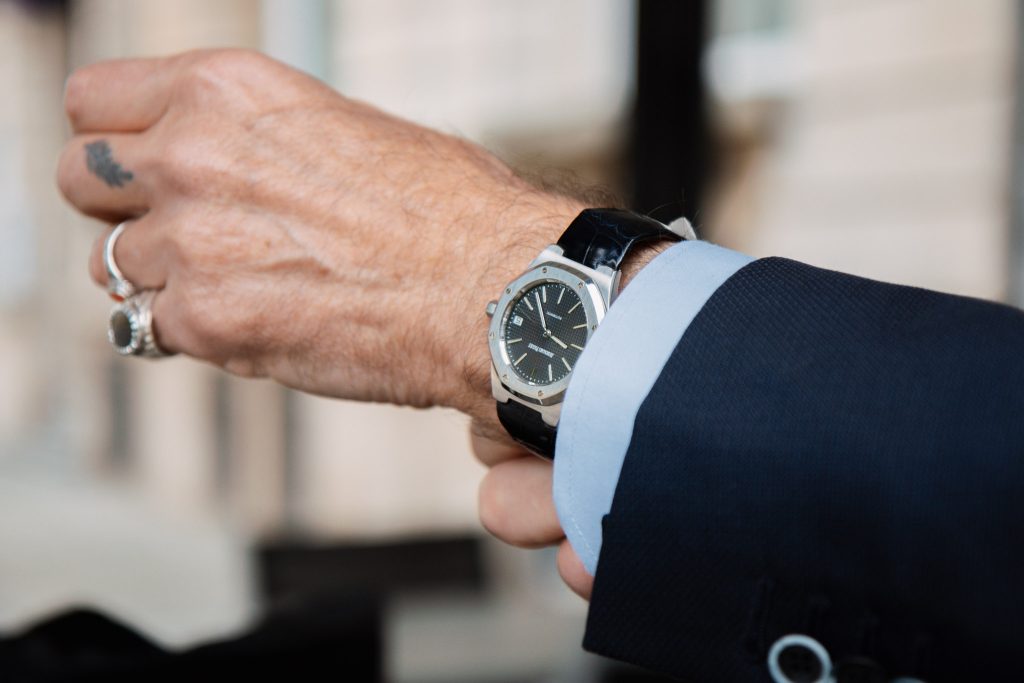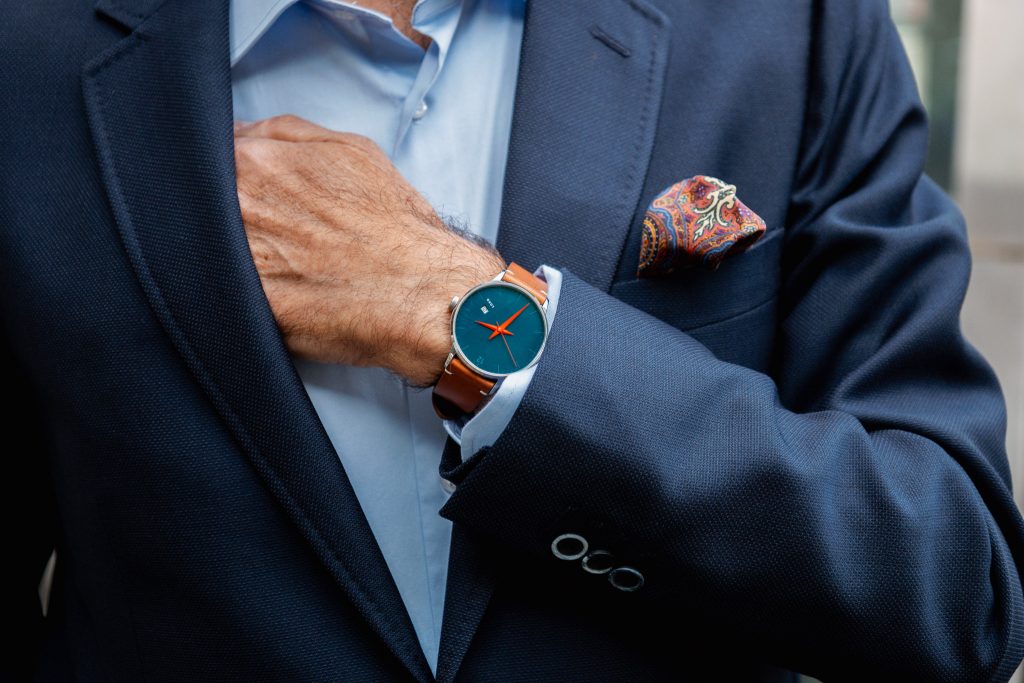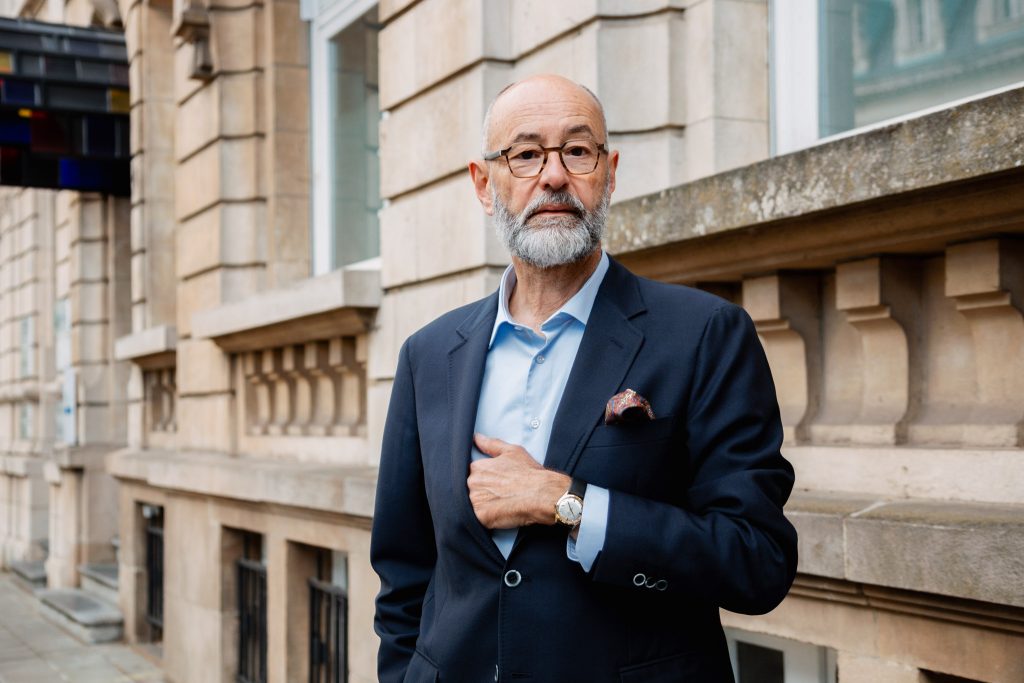In 2019, watch collector Georges Weyer launched luxury brand Loxo. When the pandemic hit, he faced a choice: discount his limited editions—or destroy them to protect their value.
We’re seated at the café inside Luxembourg’s modern art museum, Mudam, in Kirchberg. The scent of daffodils lingers in the air, diffused by soft natural light despite the overcast sky. Museum staff move quietly around us, setting long tables for an event.
“We can only stay until four,” Georges says politely, motioning to the table beside us. Tall and in his sixties, he is dressed in an elegant grey herringbone jacket and crisp blue shirt. “There’s a private function,” he adds.
He would know—Georges works as a tour guide for several museums including the Mudam and the Musée Dräi Eechelen. He speaks animatedly about a new exhibition there. And when the conversation shifts to watches, there’s a sparkle in his eyes and he rolls back one sleeve to reveal a freshly arrived Zenith watch.

An icon on the wrist
“It arrived today,” he says. First released in 1969, the El Primero was one of the first automatic chronograph movements ever created—and the first to be fully integrated (not a modular add-on) and capable of high-beat precision. Today it is a staple among luxury watch enthusiasts and even inspired Rolex, which famously used a modified El Primero movement for its Daytona chronograph (ref. 16520) from 1988 to 2000.
“It’s the last watch I will buy,” he says wistfully. “My plan is to stop buying as of now because I have collected the iconic watches that are quite well known.”
A living collection
Georges’ collection of over 50 mechanical wristwatches ranges from his great-grandfather’s pocket watch to the Omega Speedmaster Professional—the first watch worn on the moon. And what makes the collection even rarer is that it doesn’t stay hidden away in a safe.
“I don’t just consider them as an investment. The idea is I will wear them,” he says. His mechanical wristwatches are items of beauty and luxury—not to mention practical for telling the time. Although Georges points out: “No one in the world needs a mechanical wristwatch. If you want to know what time it is, you check your smartphone or your smartwatch!”

The magic of miniature mechanics
What fascinates him about watchmaking is the craftsmanship. To illustrate the point, he recalls a guided tour he once took to the giant astrological clock in the Swiss town of Bern. “There you can just see it with your own eyes. Reducing that enormous movement where you can stand next to it, to just a millimetres thickness on your wrist—that is the appeal. To have something that works that big that also works in miniature—That’s amazing!”
A gentleman of distinction
If not for his Luxembourgish accent, Georges could easily be mistaken for an English gentleman. He chooses his words with care and carries himself with a stillness and elegance that echoes the watches he collects.
He chuckles that his language skills have nothing to do with school. He never attended university or even completed his baccalauréat. Georges spent 40 years working in Luxembourg’s financial services sector. He started in insurance, then moved into banking, where he worked in nearly every area—except accounting and trading. He later transitioned into investment funds and private equity.
The first of many
Like every collection, his started with a single piece: an automatic Alpina wristwatch he received in 1968. His first collector’s watch was a Royal Oak by Audemars Piguet, one of the most iconic and influential luxury sports watches ever made. Designed by Gérald Genta and first released in 1972, it features a tapisserie dial and ultra-thin movement. The Royal Oak is considered the grail of watches and has been worn by everyone from Jay-Z and LeBron James to Karl Lagerfeld and John Mayer.
His career enabled him to pursue his passion, selecting watches for their design and movement. Georges is clear that his collection was never about financial gain.

The birth of Loxo
In 2018–2019, he created Loxo, a luxury watch brand that released 300 limited edition pieces. The brand’s name has two origins. One is a nod to the Greek myth of Loxo, a handmaiden of Artemis and demi-goddess of archery. Georges rolls up another sleeve, revealing a tattoo of a bow and arrow in blue ink. “The other story comes from Pedro Nunes, the Portuguese cosmographer and mathematician, who calculated the Loxodrome, an arc crossing all meridians of longitude at the same angle, which is used for navigation.”
Luxembourg design, Swiss made
The wristwatch was the result of a Luxembourg-French collaboration by designer Julie Conrad and artist Aude Legrand and made in Switzerland. It featured a blue face and a large red hand that gradually changed to a rust colour under UV light—Legrand’s way of making the evolution of time visible.
Following its 2019 launch, Georges sold around 100 watches, many at events. Precision and craftsmanship were key selling points, but in-person interaction also mattered. Touch was important. People want to feel the weight, the detail.
Then in March 2020, the pandemic hit, making in-store sales impossible. Larger manufacturers adapted by moving online; some raised their prices, while others slashed them. Loxo, a small independent brand, found itself caught in the middle.
“I decided to stop marketing because I had sold a lot of our watches to family and friends who paid a fair price. I didn’t want these watches to be found on some website being sold in an outlet sale for €400,” Georges recalls.
A Difficult Decision
He was left with one solution: “I destroyed them,” he says quietly. In all, he destroyed 200 of the 300 limited-edition Loxo watches.
Was it an emotional decision? “It was, yes,” Georges pauses. Then he smiles, and the sparkle returns to his eyes as he adds: “The prototypes went to the National Museum, where they will be on display for a show about Luxembourg design.” As a tour guide at the museum, Georges will be well-placed to share the story of this remarkable piece of local design and watchmaking history.
Georges’ advice for fellow watch collectors
“I think when you’re a collector, you should not consider it from an investment point of view, but for your own pleasure, just like collecting art. Do it because you like it, not to make money out of it!”

Read more articles:
The Ultimate Spots For A Sophisticated Business Lunch In Luxembourg
The One Luxury These Billionaires Say They Can’t Live Without
Luxlait: When Tradition Meets Sustainable Innovation

